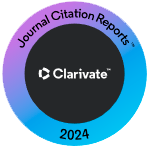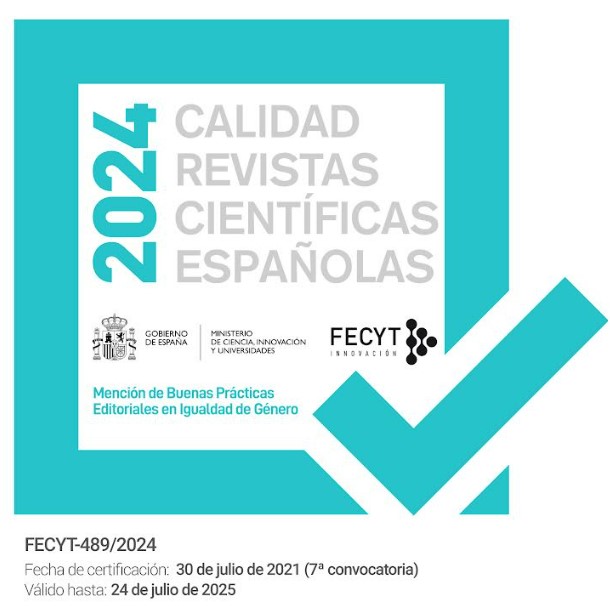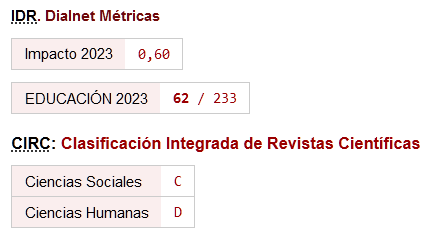Analysis of artificial intelligence chatbots and satisfaction for learning in mathematics education
DOI:
https://doi.org/10.46661/ijeri.8196Keywords:
Chatbots, Mathematics education, Artificial intelligence, ICT, Teaching & LearningAbstract
The use of artificial intelligence (AI) is becoming increasingly widespread in today's society. This type of technology, and more specifically chatbots as virtual assistants, can be implemented and integrated as a support tool in educational environments. This article proposes the creation of chatbots in the subject of didactic of geometry of the Degree of Primary Education of the Faculty of Education at the University of Málaga, carried out by 120 students in two groups. The aim is to analyse these chatbots, as well as the students' evaluation and satisfaction with them. To this end, the students were given brief training so that they could generate their own bots and know how to integrate them into a social network and then use them. The results of the questionnaire show that the students have shown interest in the generation of their chatbot and its integration into the social network, have improved their digital competence, as well as demonstrating a high degree of satisfaction with their AI creations, along with the idea that this type of experience can be transferred to other subjects and educational contexts.
Downloads
References
Aguilar, L. J. (2021). Internet de las cosas: Un futuro hiperconectado: 5G, Inteligencia Artificial, Big Data, Cloud, Blockchain, Ciberseguridad. Alpha Editorial.
Arabit García, J., & Prendes Espinosa, M. P. (2020). Metodologías y Tecnologías para enseñar STEM en Educación Primaria: análisis de necesidades. Pixel-Bit: Revista de medios y comunicación,57,107-128. https://doi.org/10.12795/pixelbit.2020.i57.04
Cheng, X., Zhang, X., Cohen, J., & Mou, J. (2022). Human vs. AI: Understanding the impact of anthropomorphism on consumer response to chatbots from the perspective of trust and relationship norms. Information Processing & Management, 59(3), 102940. https://doi.org/10.1016/j.ipm.2022.102940
Díaz Durán, M., & Svetlichich, M. (2016). Nuevas herramientas tecnológicas en la educación superior. Proyecciones, 11,93-149.
Domingo, J. (2017). Botter, un compañero robot para ayudar a los estudiantes noveles de la UOC. Educación, Psicología y Sociedad. https://blogs.uoc.edu/epce/es/robot-botter-pepito-grillo-para-ayudar-los-estudiantes-noveles-uoc/
Guerrero, J. D., Bazan, Y. L., & Moreno, F. S. (2017). Desarrollo de chatbot usando bot framework de Microsoft. Espirales revista multidisciplinaria de investigación, 1(11), 8.
Hair, J. F., Anderson, R. E., Tatham, R. L., & Black, W. (1999). Análisis Multivariante. Prentice Hall.
Hernández, R., Fernández, C., & Baptista, P. (2014). Metodología de la investigación. McGrawHill.
Hiremath, G., Hajare, A., Bhosale, P., Nanaware, R., & Wagh, K. S. (2018). Chatbot for education system. International Journal of Advance Research, Ideas and Innovations in Technology, 4(3), 37-43.
Henriquez, C., Sánchez-Torres, G., & Salcedo, D. (2021). Tashi-Bot: A Intelligent Personal Assistant for Users in an Educational Institution. Preprints, 2021080380. https://doi.org/10.20944/preprints202108.0380.v1
Hurtado, J. (2012). Metodología de la investigación: guía para una comprensión holística de la ciencia. Ciea-Sypal y Quirón.
Jurafsky, D., & Martin, J.H. (2020). Speech and Language Proccesing: An introduction to Natural Language Processing. Computational Linguistic, and Speech Recognition. Prentice-Hall.
Kaushal, V., & Yadav, R. (2022). The role of chatbots in academic libraries: An experience-based perspective. Journal of the Australian Library and Information Association, 71(3), 215-232. https://doi.org/10.1080/24750158.2022.2106403
Mazza, R. S. L., & Rodriguez, M. S. (2021). Inteligencia Artificial y su intervención en la justicia, ¿una realidad próxima? Legem, 7(2), 101-111.
Ocaña-Fernández, Y., Valenzuela-Fernández, L. A., & Garro-Aburto, L. L. (2019). Inteligencia artificial y sus implicaciones en la educación superior. Propósitos y representaciones, 7(2), 536-568.http://dx.doi.org/10.20511/pyr2019.v7n2.274
Porcelli, A. M. (2020). La inteligencia artificial y la robótica: sus dilemas sociales, éticos y jurídicos. Derecho global. Estudios sobre derecho y justicia, 6(16), 49-105. http://dx.doi.org/10.19083/ridu.2018.831
Rodríguez, E. (2017). Universidad CEU pone en marcha un bot sobre Microsoft Azure. ComputerWORLD University. https://www.computerworlduniversity.es/
Ruíz-Rey, F., & Moral-Sánchez, S.N. (2023). Chatbots en didáctica de la geometría para el aprendizaje en entornos de formación inicial del profesorado. In C. Cristófol, P. López & A. M. Martínez (Eds.), Comunicación en Código Digital, (pp. 229-235). Editorial Tecnos.
Russell S. J., & Norvig, P. (1994). Artificial Intelligence. A Modern Approach. Prentice Hall.
Smutny, P., & Schreiberova, P. (2020). Chatbots for learning: A review of educational chatbots for the Facebook Messenger. Computers & Education, 151, 103862. https://doi.org/10.1016/j.compedu.2020.103862
Vega, M. Á., Mora, L. M. Q., & Badilla, M. V. C. (2020). Inteligencia artificial y aprendizaje automático en medicina. Revista médica sinergia, 5(8), e557-e557. https://doi.org/10.31434/rms.v5i8.557
Wilks, Y. (2019). Artificial Intelligence: Modern Magic or Dangerous Future. Icon.
Wollny, S., Schneider, J., Di Mitri, D., Weidlich, J., Rittberger, M., & Drachsler, H. (2021). Are we there yet? -a systematic literature review on chatbots in education. Frontiers in artificial intelligence, 4, 654924. https://doi.org/10.3389/frai.2021.654924
Wu, R., & Yu, Z. (2023). Do AI chatbots improve students learning outcomes? Evidence from a meta‐analysis. British Journal of Educational Technology, 23, 1-30. https://doi.org/10.1111/bjet.13334
Published
How to Cite
Issue
Section
License
Copyright (c) 2023 Silvia Natividad Moral-Sánchez, Francisco José Ruiz Rey, Manuel Cebrián de la Serna

This work is licensed under a Creative Commons Attribution-NonCommercial-NoDerivatives 4.0 International License.












